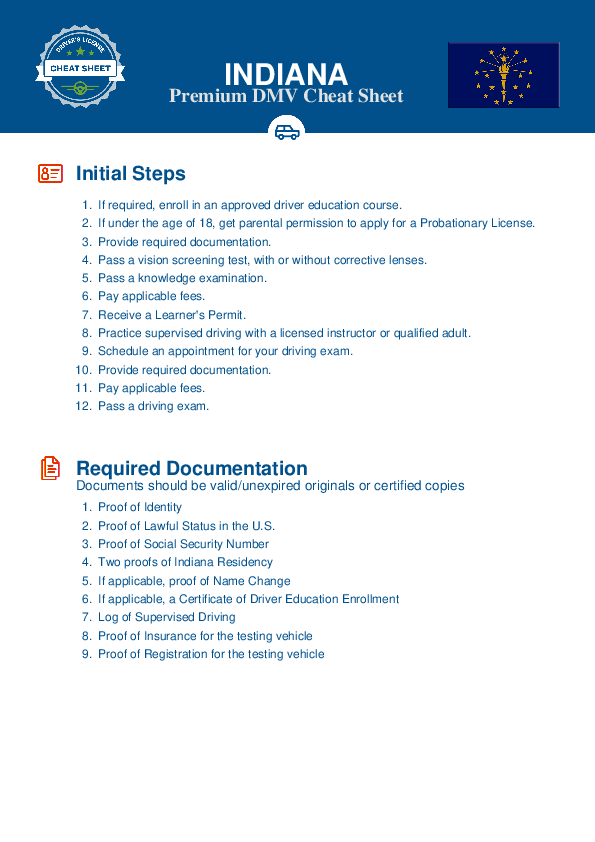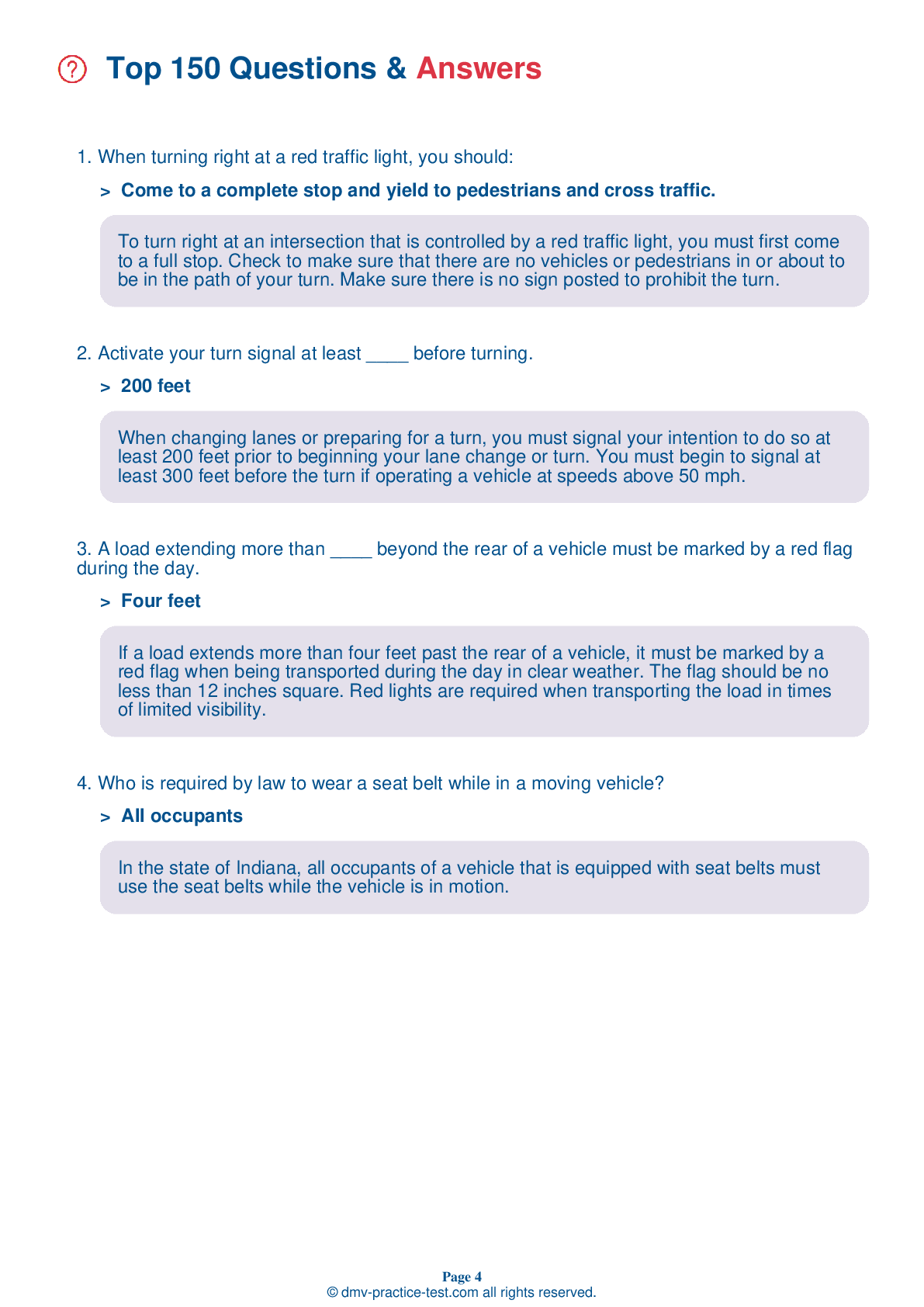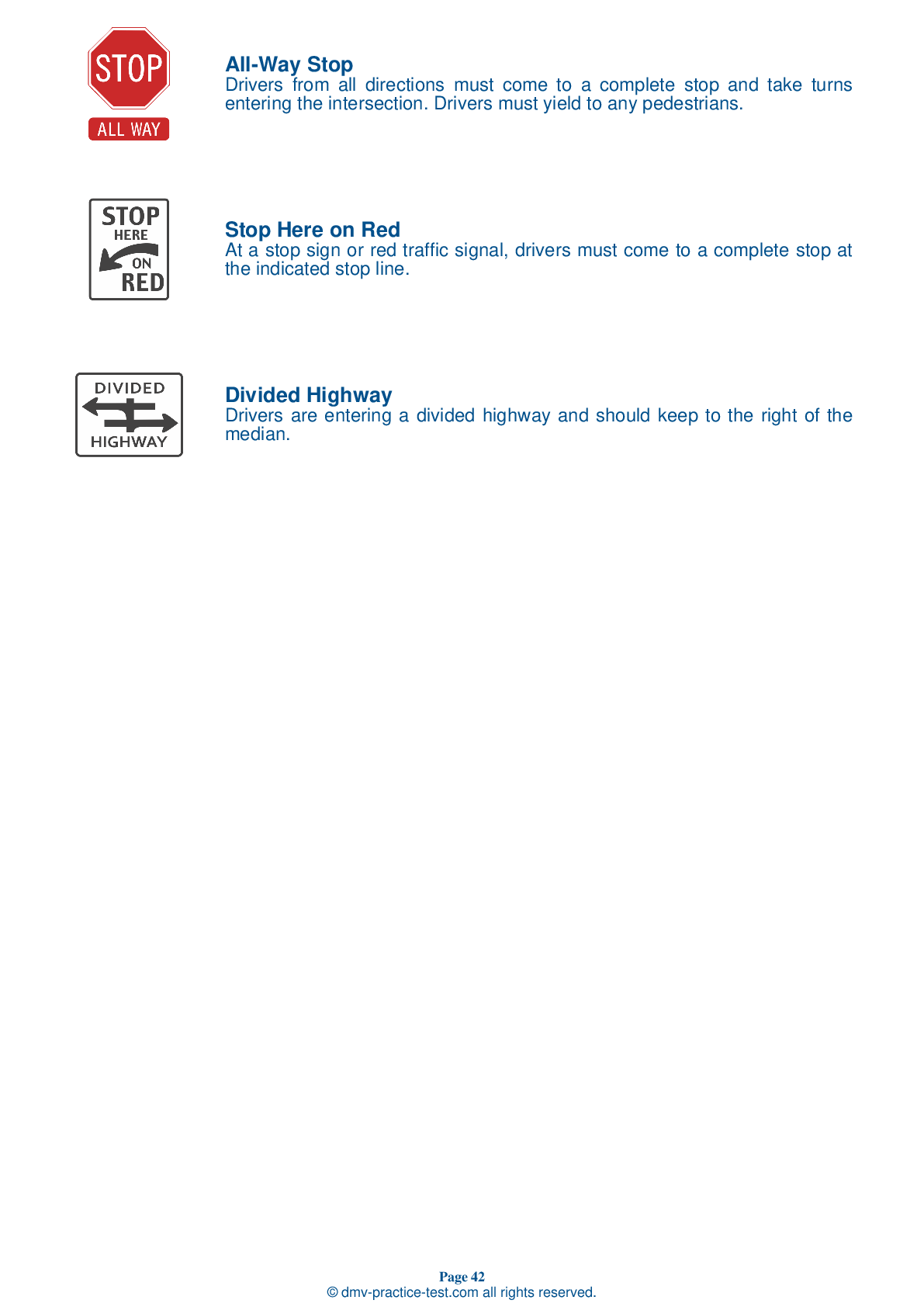FREE Indiana DMV Practice Test #20 Page 4 of 5
This set of Indiana DMV practise tests has been updated for January 2026. It includes questions based on the Indiana Driver Handbook's most significant traffic signals and laws for 2026. Use actual questions that are very similar (often identical!) to the DMV driving permit test and driver's licence exam to study for the DMV driving permit test and driver's licence exam.
On the practise exam, each question gets a tip and explanation to help you remember the concepts. The written component of the official Indiana DMV test will include questions about traffic rules, traffic signs, and driving statutes, as well as information from the Driver Handbook.
To obtain a passing grade, you must correctly answer 44 of the 50 questions. Take our DMV practise exam to help you prepare for your Indiana instruction permit or driver's licence.
The DMV exam is available in several languages.
Using any kind of testing assistance will result in an automatic fail, and the DMV may take additional action against your driver's licence, so stay away from it.
28 . How can you help prevent rear-end collisions?
Stopping suddenly can make it difficult for drivers behind you to avoid a rear-end collision. When stopping, release the accelerator to allow your vehicle to slow. Press the brake pedal by applying steady pressure, activating your brake lights and causing the vehicle to stop smoothly.
29 . This sign means:
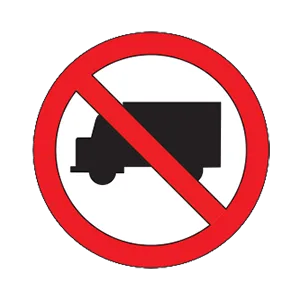
Regulation signs regulate traffic speed and movement, displaying rules which drivers must obey. Large trucks are not permitted where this sign is posted.
30 . On a two-lane street, your vehicle is being followed by a fire engine that is not using its emergency signals. You should:
If you are being followed by an emergency vehicle that is not using its siren or flashing lights, you do not need to clear a path. Continue driving in a normal manner.
31 . When you see other drivers around you acting or reacting in anger:
When other drivers are behaving angrily, you should take action to physically and mentally distance yourself from the situation. Avoid making eye contact with them, or making body movements or gestures that could provoke them. Slow down, move over, or do whatever you safely can to put yourself out of danger.
32 . This sign means:
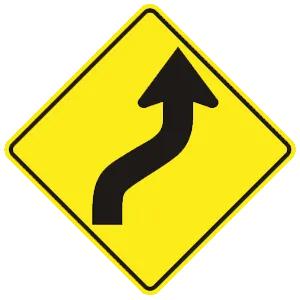
Warning signs are used to warn drivers about upcoming hazardous conditions and are usually yellow with black markings. This sign warns drivers that the road ahead curves to the right and then to the left.
33 . You must stop at an intersection when you see a:
A flashing red traffic signal has the same meaning as a stop sign. At an intersection with a flashing red light, you must come to a complete stop, look both ways, and proceed only after the intersection is clear.
34 . You should honk your horn when you:
Your horn should be used as a warning in situations where you think another driver or a pedestrian does not see you. For example, if a child begins to run into the street in front of your vehicle, you should sound your horn.
35 . An octagonal sign is always a:
Octagonal signs are always stop signs. Come to a complete stop when approaching a red, eight-sided sign.
36 . If you need to stop quickly and your vehicle is not equipped with an Anti-Lock Braking System (ABS), you should:
Pumping the brakes is generally the best way to stop a car in an emergency. The car will stop quickly and you will also be able to continue steering.
37 . Compared to driving during the day, driving at night is:
Driving at night is more dangerous than driving during the day for several reasons. It is harder to see in the dark, you may be temporarily blinded by the glare from other vehicles' lights, and there are likely to be more drivers on the road who are tired or under the influence.
38 . Texting while driving is:
In the state of Indiana, drivers are not permitted to use a telecommunications device to type or read a text or email while operating a vehicle. The only exception to this is if the device is being used to contact emergency services.
Need Car Insurance? No problem!
Compare the best rates in Indiana and find a personalized policy that meets your needs.
1. Are You Currently insured ?
2. Married ?
3. Do you own your Home?
4. Do you have more than 1 car ?
5. Have you or a Family Member Honorably Served in U.S. Military ?
6. Your Name
7. Age
8. Zip code
IMPORTANT REMINDER:Auto Insurance is Mandatory to drive in Indiana. Get covered before you hit the road to avoid any fines.
Ranked by best match
